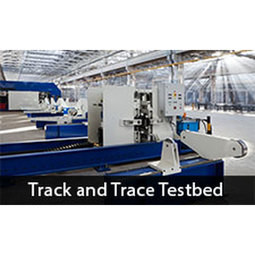
Technology Category
- Networks & Connectivity - Bluetooth
- Networks & Connectivity - Cellular
Use Cases
- Track & Trace of Assets
The Customer
Custodia Systems
About The Customer
Custodia Systems is a UK security consultancy and the global distributor of a market-leading tracking device. It needed a fail-safe communications infrastructure to support its products and services. To ensure consumer confidence and provide a competitive
The Challenge
Custodia Systems is a security consultancy based in the UK. It was founded in 2005 by Peter Thompson, a former Goldman Sachs technology and engineering lead, with start up capital of £4,000 (approximately €4,800). It is now the global distributor of Appello tracking devices and its products currently protect £150 million (€180 million) of construction machinery in the UK.
The Appello device is a small, portable unit (no bigger than a smartphone) with a battery life of up to two years. It has no external wiring and cannot be located by scanning devices used by professional thieves like GPS (Global Positioning System) units.
The device is hidden, for example among the engineering of a piece of plant machinery and sends out a regular signal to mark its present location. Worldwide, Custodia Systems claims 80% of stolen equipment is recovered and back with its owners within eight hours.
To ensure consumer confidence and provide a competitive advantage, Custodia Systems needed a fail-safe communications infrastructure that needed to be international, reliable and as accurate as possible. In addition, to support the launch of the AppelloGEO – a new product that can be used globally – Custodia Systems needed a global platform and fixed price international tariffs.
The Solution
Peter Thompson was already familiar with Vodafone’s business services from his time at Goldman Sachs. He was confident Vodafone’s Location Based Services would provide the most effective asset recovery solution, with a pre-installed SIM sending out a signal, indicating an estimated location. A recovery team could then track the device on the ground using a radio beacon.
To be most effective, the devices would need to transmit over long distances. Vodafone operates on the 900MHz frequency in the UK. This frequency penetrates buildings and materials more effectively than the 1800MHz frequency used by other communications service providers. It means the signal can travel significantly further (up to 20 miles, as opposed to two miles on 1800MHz) and the device can be located even in the most inaccessible places. Stolen assets have been found in concrete bunkers, steel shipping containers and underground car parks.
The Vodafone network supports accurate positioning by using the direction and distance of the tracking device from the nearby cellular masts, meaning Custodia Systems would be able to narrow the search area by two-thirds.
“Vodafone also stores a cache of the last location,” says Thompson. “Every network registers the current location, but Vodafone is the only network in the UK to archive the last known locations.”
The AppelloGEO device is dormant for most of the time, saving energy and making it hard for thieves to detect a signal, however it switches on to send regular alerts. “Being able to detect the location based on the last signal is an even more important feature than the Timing Advance. It means we can prove when the device was last switched on and that it was working before the asset was stolen,” says Thompson.
To be most effective, the devices would need to transmit over long distances. Vodafone operates on the 900MHz frequency in the UK. This frequency penetrates buildings and materials more effectively than the 1800MHz frequency used by other communications service providers. It means the signal can travel significantly further (up to 20 miles, as opposed to two miles on 1800MHz) and the device can be located even in the most inaccessible places. Stolen assets have been found in concrete bunkers, steel shipping containers and underground car parks.
The Vodafone network supports accurate positioning by using the direction and distance of the tracking device from the nearby cellular masts, meaning Custodia Systems would be able to narrow the search area by two-thirds.
“Vodafone also stores a cache of the last location,” says Thompson. “Every network registers the current location, but Vodafone is the only network in the UK to archive the last known locations.”
The AppelloGEO device is dormant for most of the time, saving energy and making it hard for thieves to detect a signal, however it switches on to send regular alerts. “Being able to detect the location based on the last signal is an even more important feature than the Timing Advance. It means we can prove when the device was last switched on and that it was working before the asset was stolen,” says Thompson.
Quantitative Benefit

Case Study missing?
Start adding your own!
Register with your work email and create a new case study profile for your business.
Related Case Studies.

Case Study
IoT Applications and Upgrades in Textile Plant
At any given time, the textile company’s manufacturing facility has up to 2,000 textile carts in use. These carts are pushed from room to room, carrying materials or semi-finished products. Previously, a paper with a hand-written description was attached to each cart. This traditional method of processing made product tracking extremely difficult. Additionally, making sure that every cart of materials or semi-finished products went to its correct processing work station was also a problem. Therefore, the company desired an intelligent solution for tracking assets at their factories. They also wanted a solution that would help them collect process data so they could improve their manufacturing efficiency.

Case Study
Goldcorp: Internet of Things Enables the Mine of the Future
Goldcorp is committed to responsible mining practices and maintaining maximum safety for its workers. At the same time, the firm is constantly exploring ways to improve the efficiency of its operations, extend the life of its assets, and control costs. Goldcorp needed technology that can maximize production efficiency by tracking all mining operations, keep employees safe with remote operations and monitoring of hazardous work areas and control production costs through better asset and site management.

Case Study
Buoy Status Monitoring with LoRa
The Netherlands are well-known for their inland waterways, canals, sluices and of course port activities. The Dutch Ministry of Infrastructure indicates that there are thousands of buoys and fixed items in and near water environments that would profit from IoT monitoring. One of the problems with buoys for example, is that they get hit by ships and the anchor cable breaks. Without connectivity, it takes quite some time to find out that something has happened with that buoy. Not to mention the costs of renting a boat to go to the buoy to fix it. Another important issue, is that there is no real-time monitoring of the buoys at this moment. Only by physically visiting the object on the water, one gains insight in its status.
Case Study
IoT Based Asset Tracking System
The existing system used by the customer could only track a few thousand assets and was able to generate only a few standard set of reports. As the number of assets tracked grew exponentially, the system started to break at the seams. The Tracking devices were from different manufacturers following different protocols. There was no proper integration among the devices to send instant alerts. There are thousands of tracking devices spread across multiple geographies, that are moving. The configuration and troubleshooting of these devices incurred heavy costs, which was a logistics challenge. The existing system did not provide sophisticated Analytics, Business Intelligence and Insights from the data

Case Study
IIC - Track and Trace Testbed
Factory systems can detect - within a meter - the location of a tool; Misuse of tools can result in serious accident or injury; The production of many industrial and consumer goods requires exacting work - down to the precise force used to tighten a screw. GOAL Manage smart, hand-held tools in manufacturing, maintenance, and industrial environments







